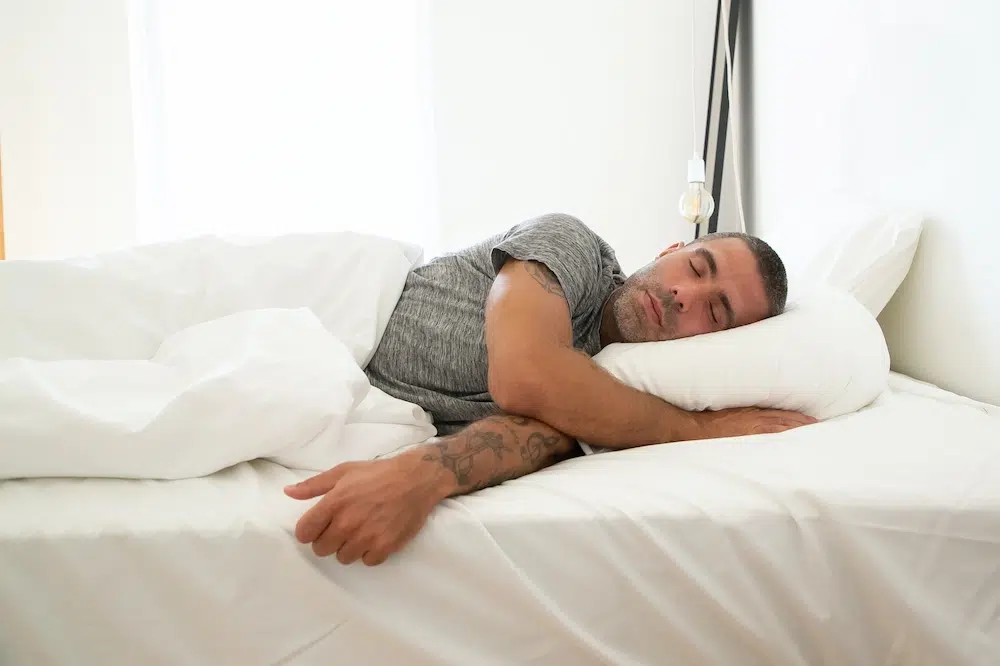
Common Treatment Options For OSA
Are you always tired, even after a full night’s sleep? You think you’re getting enough rest, but what if you’re not breathing well while you sleep? This is a sign of Obstructive Sleep Apnea (OSA).
A lot of people have OSA and don’t even know it! It’s when you stop breathing for a few seconds during sleep. This can happen many times each night.
OSA is not just bad for your sleep; it can also make you more likely to have heart problems and other health issues. It’s a big deal, but the good news is that there are ways to treat it.
Keep reading to learn about common treatments for OSA that can help you get the sleep you deserve!
Diagnosing Obstructive Sleep Apnea
Understanding the Symptoms and Risk Factors
Do you snore a lot? Feel tired all day? These are the signs of Obstructive Sleep Apnea. Being overweight or having a family with OSA puts you at more risk. Even kids can have it!
Knowing the signs helps you take the first step to feel better.
Overview of Diagnostic Methods
To confirm you have OSA, get tested. The most common test is a sleep study. You’ll sleep at a center while doctors monitor you. They check your breathing and heart rate. Some people can even test at home.
Non-Invasive Treatment Options
Lifestyle Changes and Sleep Hygiene Practices
You can fight OSA with simple changes. Good sleep habits can make a big difference. You can consider these 3 steps mentioned below.
Weight Management and its Impact on OSA
Losing weight is a powerful way to combat OSA. Less weight means your airway is less likely to get blocked. This makes breathing easier when you sleep.
Positional Therapy to Improve Breathing
Sleeping on your side can help your breathing. It keeps your airways open. Some people even use special pillows to stay in the right position.
Sleep Schedule and Environment Optimization
A good sleep routine helps a lot. Go to bed at the same time each night. Make your room dark and cool. These changes set the stage for better sleep.
Continuous Positive Airway Pressure (CPAP)
CPAP is a machine that helps you breathe. It sends air into your nose and mouth to keep your airway open. It’s one of the best ways to treat OSA.
How CPAP Works to Keep the Airways Open
The CPAP machine pushes air into your airways. This keeps them open so you can breathe all night long. It’s like a gentle wind that helps you breathe.
Different Types of CPAP Devices Available
There are different kinds of CPAP machines. Some fit over your nose, and some cover both your nose and mouth. Your doctor will help you pick the best one for you.
Addressing Common Challenges and Improving Adherence
Using a CPAP machine can feel strange at first. But don’t give up. You can try different masks or adjust the settings. Once you get used to it, you’ll sleep better and feel great!
Oral Appliance Therapy (OAT)
Overview of Oral Appliances for OSA
Oral appliances are like special mouthguards you wear at night. They help keep your airway open so you can breathe easier. It’s a good option if CPAP doesn’t work for you or feel uncomfortable.
Mechanism of Action and Effectiveness in Reducing Symptoms
These appliances work by moving your jaw forward. This opens up space in your throat, helping you breathe better. Many people find that their snoring stops and they feel more rested in the morning.
Advantages and Disadvantages Compared to CPAP
Oral appliances are quieter and easier to carry than CPAP machines. They’re great for travel. But they don’t work as well for severe OSA. Also, you need regular dentist visits to check the fit.
Surgery as a Treatment Option
Types of Surgical Procedures for OSA
3 main surgeries can help treat OSA: UPPP removes throat tissue, GA moves a tongue muscle, and MMA adjusts the jaw. Let’s know about these 3 surgeries.
Uvulopalatopharyngoplasty (UPPP)
This surgery takes out extra tissue in your throat. The goal is to make more room for air to flow.
Genioglossus Advancement (GA)
This procedure moves a muscle in your tongue forward. This can free up space in your throat to help you breathe easier.
Maxillomandibular Advancement (MMA)
This surgery changes the position of your jaw. By doing this, it opens up the airway to help improve your breathing while you sleep.
Candidacy Criteria for Surgical Intervention
Surgery is usually the last option. It’s for people who tried other treatments like CPAP and oral appliances but didn’t get better. Your overall health also matters. Your doctor will help you know if surgery is right for you.
Potential Risks and Complications Associated with Surgery
Every surgery has risks, like infection or pain. But doctors do their best to keep you safe. It’s important to know these risks before you decide on surgery. Talking to your doctor will help you make the best choice for your health.
Combination Therapies and Emerging Treatments
Combining CPAP with Other Interventions for Better Outcomes
Using a CPAP machine is often the first step for treating OSA, but it’s not always enough. Combining CPAP with lifestyle changes, like weight loss or sleep position, can improve your results. Oral appliances can also help.
Adaptive Servo-Ventilation (ASV) and its Role in OSA Management
Adaptive Servo-Ventilation, or ASV, is a newer device that adjusts to your breathing pattern. Unlike regular CPAP, it can change air pressure as you sleep. This helps to keep your airway open more effectively.
It’s a useful option for those who haven’t found relief with other treatments.
Overview of Other Emerging Treatments and Ongoing Research
There’s good news in the world of OSA treatment. Researchers are actively studying new methods. These include special medications and electrical stimulation of nerves that control breathing. With ongoing research, we can expect more options for treating sleep apnea to become available soon.
Addressing Treatment Compliance and Challenges
Common Reasons for Non-Compliance with OSA Treatment
Sometimes people stop using their CPAP machine or other treatments. This happens when the mask feels uncomfortable or the machine is too loud. Others feel like the treatment isn’t helping right away.
These issues can make it hard to stick with treatment.
Strategies to Improve Adherence to Prescribed Therapies
Don’t give up if you find it hard to stick with your treatment. There are ways to make it easier. For example, try different masks to find one that feels good. Or use apps to track your sleep and see how you’re improving.
Seeking Support from Healthcare Providers and Support Groups
Your doctor and support groups can be great helpers. Don’t keep it to yourself if you’re struggling. Talk to your healthcare provider about what’s bothering you. Or join a group where you can share tips and stories with people who understand.
FAQs
1. Is OSA Treatable?
Absolutely, OSA is treatable! There are many ways to manage it, from using machines like CPAP to lifestyle changes and even surgery. Your doctor will help you find the best treatment for you.
2. Can You Treat OSA Naturally?
Yes, some natural methods can help manage OSA symptoms. Weight loss, sleep position changes, and good sleep habits are some of the natural ways to improve OSA. However, it’s best to consult a healthcare provider for a treatment plan tailored for you.
3. What is the First Line Treatment of OSA?
The first line treatment for OSA is often a CPAP machine. This device helps keep your airway open while you sleep. Many people find that CPAP makes a big difference and helps them sleep better right away.
Conclusion: Common Treatment Options For OSA
You don’t have to lose sleep over OSA. There are lots of ways to get better and they work well for many people. From CPAP machines that help you breathe to lifestyle changes that improve your overall health, you have options.
You can even explore advanced treatments or natural methods. Talk to your doctor about what will work best for you.
Remember, everyone’s journey is a little different. So, stay positive and don’t give up. With the right plan, you can look forward to better sleep and a healthier life!



